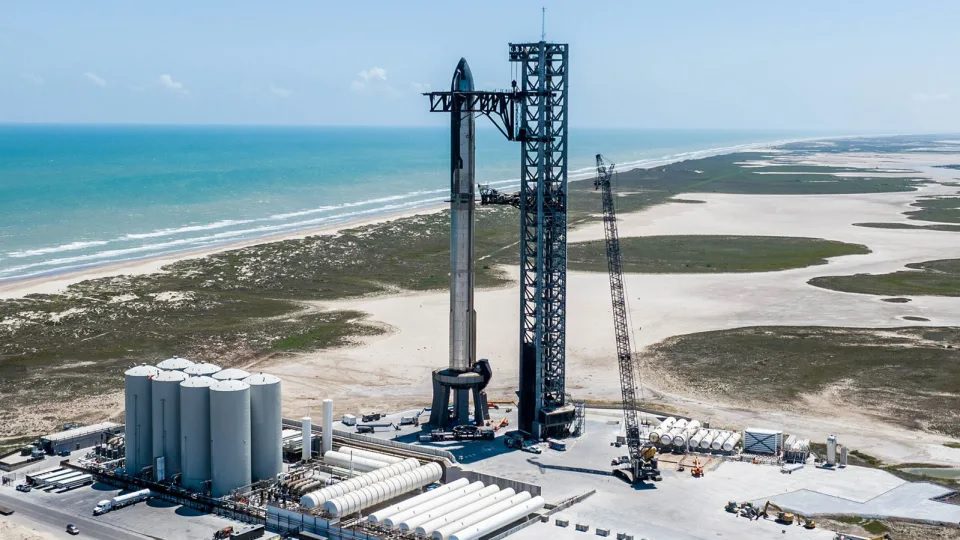Although its Super Heavy/Starship system is full stacked and ready for refuelling at the Boca Chica launch site in Texas, SpaceX has yet to get permission from the US Federal Aviation Authority (FAA) to make its second orbital flight attempt. After completing its investigation of the first flight failure, the FAA issued a list of 63 remedial actions. All of the essential corrections required for the next flight have been made by SpaceX under the supervision of the FAA, so it is just awaiting a final sign-off to fly.
While it waits, the private company released details, albeit limited, about exactly what went wrong on the maiden flight of its Super Heavy/Starship combination on 20 April. After launching at 1333 GMT, the rocket stack managed to lift off and pass Max-Q but was unable to achieve MECO and stage separation. A slow stable climb was due to end with a stage separation and a ‘flip over’ of Stage 1. However, at an altitude of 39 km the rocket assembly tipped into a windmill spin with no separation taking place and so, about four minutes into the flight, the rocket was deliberately blown up.

Ready to go again: Super Booster/Starship combination awaits FAA go-ahead for its second orbital attempt. Courtesy: SpaceX
SpaceX has since revealed that the loss of control was triggered by a propellant leak and subsequent fires. During the ascent, fires broke out in the aft end of the Super Heavy booster, which eventually severed the connection with its primary flight computer. This led to a loss of communication with a majority of the booster engines and, ultimately, control of the vehicle. SpaceX has since implemented leak mitigations and improved testing on both engine and booster hardware. As an additional corrective action, it has significantly expanded Super Heavy’s pre-existing fire suppression system covering the engine bay.
The company has also placed a water-cooled steel plate/flame deflector under the launch tower. The initial ignition of the rocket severely gouged the floor of the pad, blowing away debris and dust that damaged the propellant farm and fell on the nearby area.
Other design changes for the next flight include a requalification of the Autonomous Flight Safety System (AFSS). In the maiden flight failure, the AFSS automatically issued a destruct command that fired all detonators, but there was an unexpected delay in the destruction. Starship ultimately broke up 237.5 seconds after engine ignition.
SpaceX is also implementing a full suite of system performance upgrades. These include a hot-stage separation system, in which the vehicle’s second-stage engines will ignite to push the ship away from the booster, and a new electronic Thrust Vector Control (TVC) system for the Super Heavy Raptor engines. The latter has fewer potential points of failure and is more energy efficient than the previous traditional hydraulic system.







